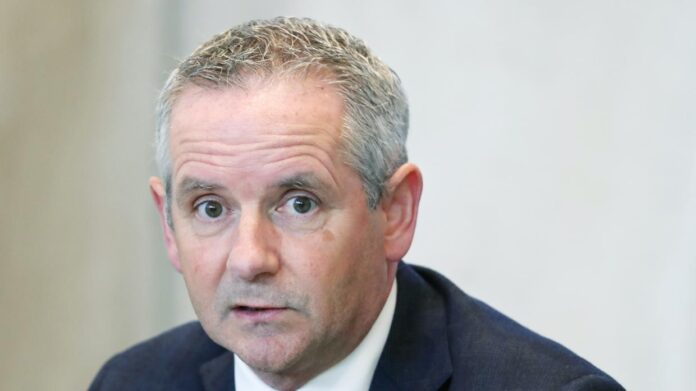
392 staff at the University of Limerick Hospitals Group(ULHG) are currently off work and self-isolating having either tested positive for Covid-19, been designated as a close contact or diagnosed at high risk of contracting the virus.
That’s according to HSE chief executive Paul Reid, who said that while there was no indication that the country has reached the peak of the Omicron wave, there were currently 240 staff out of work at University Hospital Limerick alone.
The other ULHG hospitals affected include University Maternity Hospital Limerick, Croom, St John’s, Nenagh and Ennis.
Mr Reid said it was likely that over 6,000 frontline healthcare employees are currently out of work with many hospitals going from having 60 staff out of work to more than 200 over a two or three-day period.
“It was the scale and the impact over a very short period of time. Now, thankfully some of those are coming back from their periods of isolation and ultimately we have still a high transmission level,” he added.
Non-symptomatic healthcare staff must undertake daily antigen tests which are now in high demand.
Mr Reid said there is limit to how many antigen tests the HSE can provide but it has scaled-up the use of antigen testing to 350,000 a week and almost 60,000 test were administered yesterday.
He added that the PCR testing system was “continuously stretched” across the country.
“It is under significant stress at the moment. I think the next week will tell a picture in terms of what the demand levels are going to continue at”.
In a letter issued today, Mr Reid instructed hospitals to prioritise both urgent care and Covid-19 care for the next two week and to scale back the provision of elective procedures.
He confirmed that the health service will use private hospital capacity for a certain amount of elective procedures but added that “we will have to suspend in many cases elective care”.
Mr Reid said the number of people in hospital with Covid-19 has risen from 360 ten days ago 884 today.
Over the last ten days, daily Covid case numbers increased from 5,700 to over 23,000 before falling to around 16,000 by Monday.
“We’ve no indications that we are at the peak of this just yet. That’s not what we’re all experiencing, what we’re seeing in the community, it’s what we’re seeing in the daily case numbers.
“Nobody wants to end up in hospital with Covid. It’s the force of cases, certainly early indications, which we should take some level of comfort from, is the level of severity is not as strong but again we would rather see over the next week what transmits from those cases now to ICU to have a clearer picture on that,” he added.


